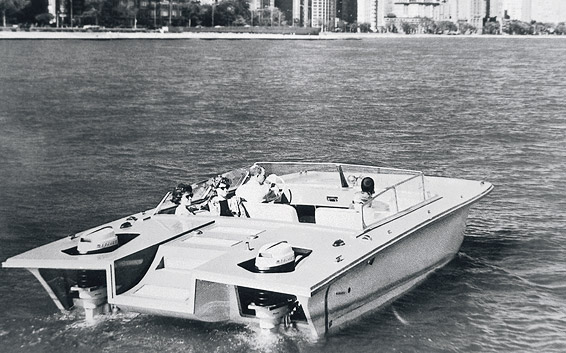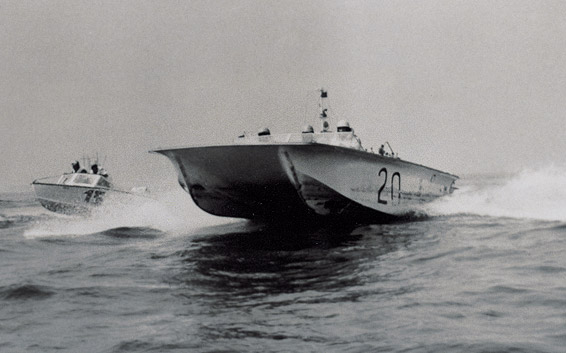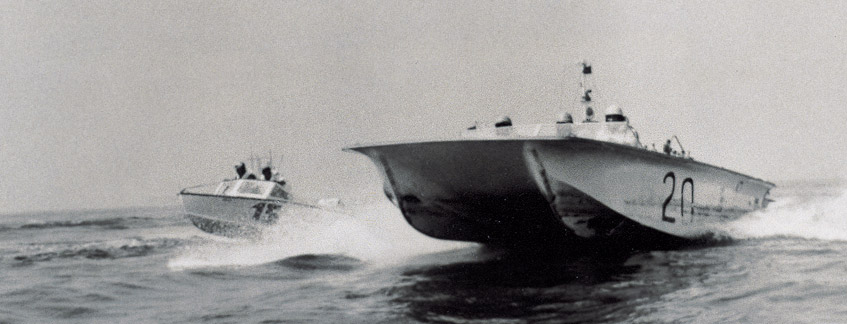Activities focused on the future of the marine products business were not limited only to outboard motors. Alongside outboard motors, YMC also considered the business potential of motorboats, the main product in marine sports. Yamaha was deeply interested in a new material, fiberglass reinforced plastic, or FRP. FRP consists of glass fibers woven into a cloth and embedded in polyester resin. Building a boat hull with FRP would make it extremely light, yet very strong.
The inspiration for using FRP in boats came from archery. President Genichi Kawakami, who was fond of archery himself, had been working for some time to find a way to enhance the precision of archery bows. On his fact-finding tour of markets in North and South America, which included a visit to the Catalina GP, he was able to acquire bows made of FRP. He also saw the increasing popularity of FRP motorboats in the US and was attracted to their future potential.

It was the summer of 1958 when the unofficial order to pursue FRP research was issued. Development on forming technology began secretly in a small plywood room in a corner of Nippon Gakki’s Tenryu Factory.
The following year, in 1959, the company succeeded in creating Japan’s first bow made from FRP and the summer of that same year saw the completion of two FRP runabout boats, whose design and trial production had been outsourced to another company. There was a 12-foot model and a 14-foot model, and they were Yamaha’s first ever boats.
Testing on the prototype boats proceeded and many improvements were made. In May 1960, Yamaha put its first commercial FRP motorboats on the market. They were the 3.95 m runabout RUN-13 and the 6.9 m catamaran CAT-21. The RUN-13 used a new V-shaped hull, while the CAT-21 was an ambitious motorboat featuring a catamaran shape, which has advantages with respect to speed and comfort.

As with motorcycles, as soon as Yamaha introduced these products on the market, it unhesitatingly plunged into the world of racing. Yamaha already knew full well that competition served not only to widely publicize the quality of its products, but also to improve technical development capacities and boost the motivation of employees.
Yamaha’s debut race came at the first Tokyo–Osaka Pacific 1,000 km Motorboat Marathon Race held in July 1961. The race was sponsored by the Japan Motorboat Racing Association and was a race against the clock in the rough open ocean between Tokyo and Osaka. The CAT-21 that took part in the race was equipped with four 75-horsepower engines made by the US company Scott-Atwater Outboard Motors. Plagued by stormy weather and hull damage, only five of the 14 boats that entered the race managed to complete it. Amid these poor conditions, the CAT-21 was the hands down winner, having been in the lead for all three days. This accomplishment proved the seaworthiness of Yamaha motorboats.
Victory in the race firmly fixed the notion of building boats capable of doing battle with the sea in the minds of the company’s engineers. The race also demonstrated the capabilities of Yamaha motorboats.

.










